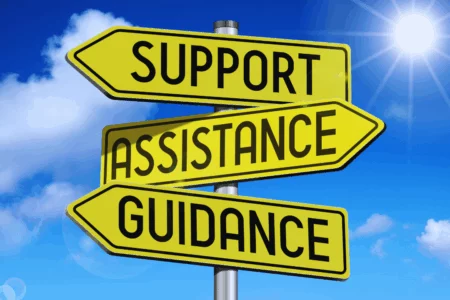Last month I wrote about sharing clients’ stories as a means of promoting a more positive conversation about R&D tax relief in industry circles and the wider press. This week I want to follow up with some tips on how to share your own stories and efforts as well.
There are several barriers to sharing clients’ stories, which I covered in last month’s article – confidentiality and the risk of your client being poached being the main ones. When you talk about your own experience instead, you avoid these issues. You can keep clients anonymous and avoid discussing specific claims. For many R&D providers, this is a much safer and more comfortable approach.
Show people your values
One of the most important things to do when talking or writing about these topics is to SHOW people the good work you’re doing, rather than simply TELLING them that you care about high standards.
How does that look in practice?
It’s very easy for a company to declare a list of values, or a vision or philosophy on their website, which means lots of people do it. And by all means, you should do it too – we regularly encourage people to read about Our Philosophy on this site.
What will help set you apart is to make sure you’re also telling your peers and customers about how those values impact the way you work. Whether you want to write articles or posts or make videos, the type of content you produce doesn’t matter nearly as much as what you tell people.
A quick activity
Write down 2-5 values which are important to your R&D service – pick a few from your website or the latest business plan or wherever. Then for each one, finish the following statement:
Because we are/value ________, we do _________.
Our example: Because we are seeking an industry-wide impact, we share our knowledge and expertise to help others work to the highest possible level.
Once you’ve written those, you can then go through them and come up with an example or two of what that looks like in your work. What changes, projects or tasks have you worked on that were directly driven by your values?
Our example: Write a series of blog posts to share marketing tips to help others in the R&D industry to share positive stories.
Each of these examples can then potentially be a topic for a post, article, or video. You can keep the list to hand next time you’re having a sales conversation and a client asks about the values on your website. If you’re doing anything that’s particularly unusual, or has a broader impact on the public, it may even be worth talking with a journalist about having them include it in a feature.
Another way to demonstrate your values
If you’re reading this, it’s likely that you’re either taking training in R&D tax relief, whether through our membership or elsewhere. Or you might be thinking about training, or reading broadly on industry trends as part of your CPD. If that’s the case, then you’re probably learning new things about R&D tax relief all the time. Each time you read an interesting article, or learn an exciting new nugget, that’s an opportunity to share with your peers and clients.
As we see it, there are two ways to improve standards in the R&D industry. Individual advisors and companies have to decide to learn more and do better, or HMRC have to impose regulation and compliance measures from above. As a provider, you can show your commitment to higher standards by showing people that you’re always working to expand your own knowledge and skills.
Perfect presentation is not the goal
That leads me on to my second key point.
It’s common, when providing a service in a competitive market, to feel like you have to be the best, most perfect, all-knowing, infallible expert in order to win business. If you’re not the one person at the very tip top of the industry, why would anyone hire you, when they could hire someone ‘better’.
There’s a lot of pressure to perform
Before coming to work for The R&D Community, I ran my own business as a marketing consultant – a similarly saturated, service-based market. So I know from deep experience what it feels like. The pressure to show endless successes, the need to always be top of the class, the fear that any tiny chink in your armour will cost you clients, and maybe your livelihood.
It’s a heavy feeling!
On the other hand, you also know what it’s like to be a consumer. If you saw a product on Amazon that had 50 reviews and they were ALL five stars, you’d be suspicious. If you went to a physiotherapist who told you none of their patients had ever relapsed or had a second injury, you’d wonder how long they’d been in business, or how many clients they’d even had.
Your clients want you to be good, of course. But if you focus too hard on looking perfect, you might end up looking too good to be true.
I say this not to give you something else to panic about, but to reassure you. Showing your peers and clients that you’re learning, developing and improving will show them that you’re engaged, proactive and conscientious. It also makes you seem more human and credible – after all, no-one’s perfect.
Now, I’m not asking you to publicly own up to anything that would put you or your clients at risk! You can focus on things like changes to the guidance or to HMRC’s approach. You can talk about training up junior members of your team to contribute more. You can talk about things you had to learn and apply for the first time. If you’re feeling brave you might talk about lessons learned from an HMRC enquiry (without including client details of course).
The temptation to trash-talk
As we work on our self-presentation, we need also to remember not to slip into comparisons and negativity. Remember: our goal is to increase the POSITIVE conversation about R&D tax relief. The competitive market makes it feel like putting others down will help you get ahead, but it can have other consequences.
Throwing shade at someone else invites them to throw it back, which isn’t a great feeling for either party.
As people read your posts and articles, there’s no tone or body language to add nuance to what you’re saying. What may feel level and tactful to you can seem petty or smug to the reader – not what you were hoping for.
If a client has heard great things about a provider that you’re putting down in your post, they can end up feeling confused and distrustful, about you and the other provider… or they might dismiss you entirely because you’re telling them something that doesn’t fit with opinions they already hold.
Plus, getting people’s attention is HARD – when you have it, don’t waste it talking down other people. Use that time to show how great you are instead.
How we can help you share your story
If you’re a member of The R&D Community, make sure you’re featured in our Members Directory. We’re also building up our bank of case studies of members, so feel free to reach out to save your spot in our collection. This is a great way to raise your profile and show the world the great work you do for your clients.
If you’re not a member, but you’ve read our articles, downloaded our resources, or taken our free training course, feel free to share that on LinkedIn. If you tag us in your post, we can comment and re-share it with our audience too.
If you have other ideas for how we can collaborate, feel free to get in touch; I’d love to hear from you!





